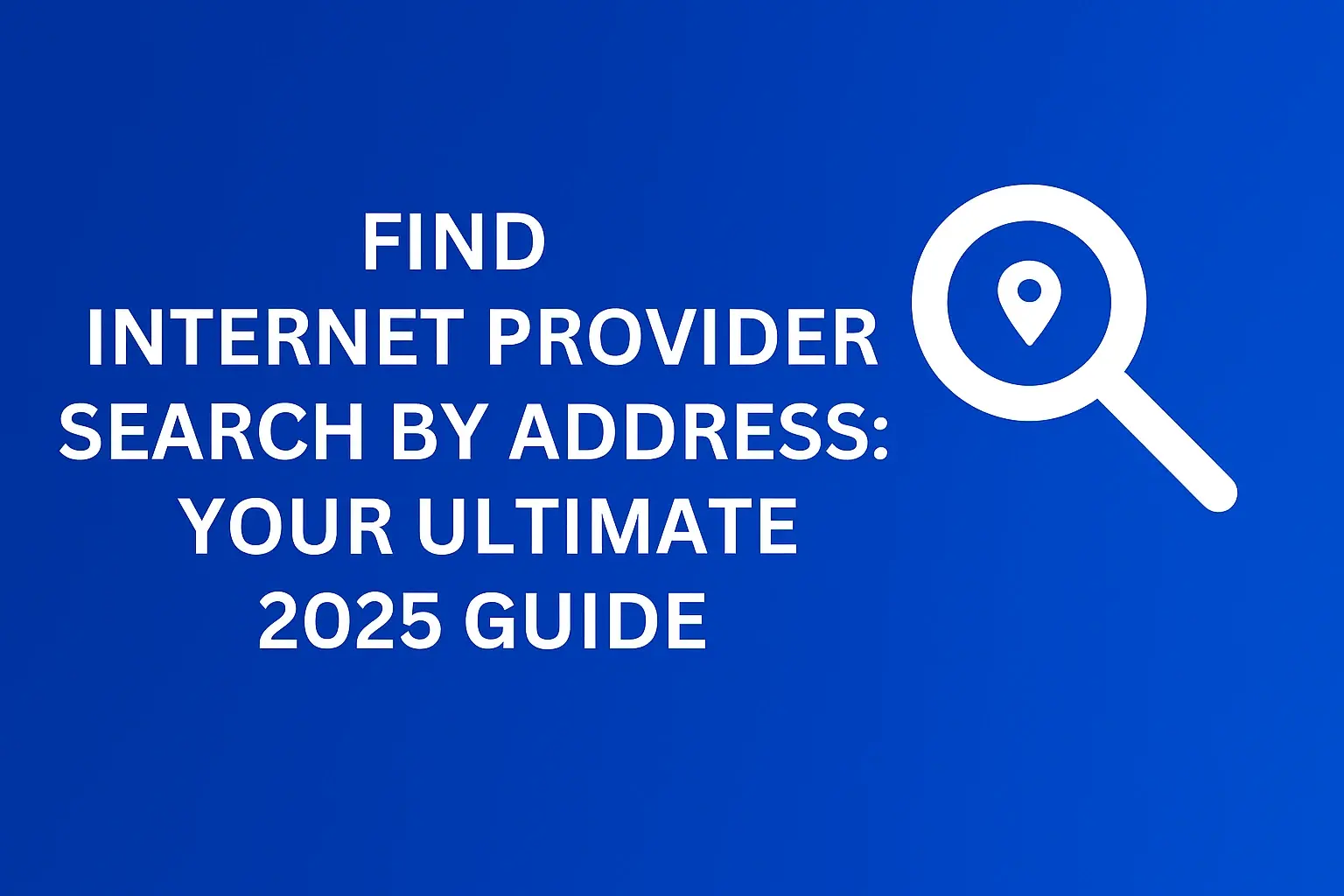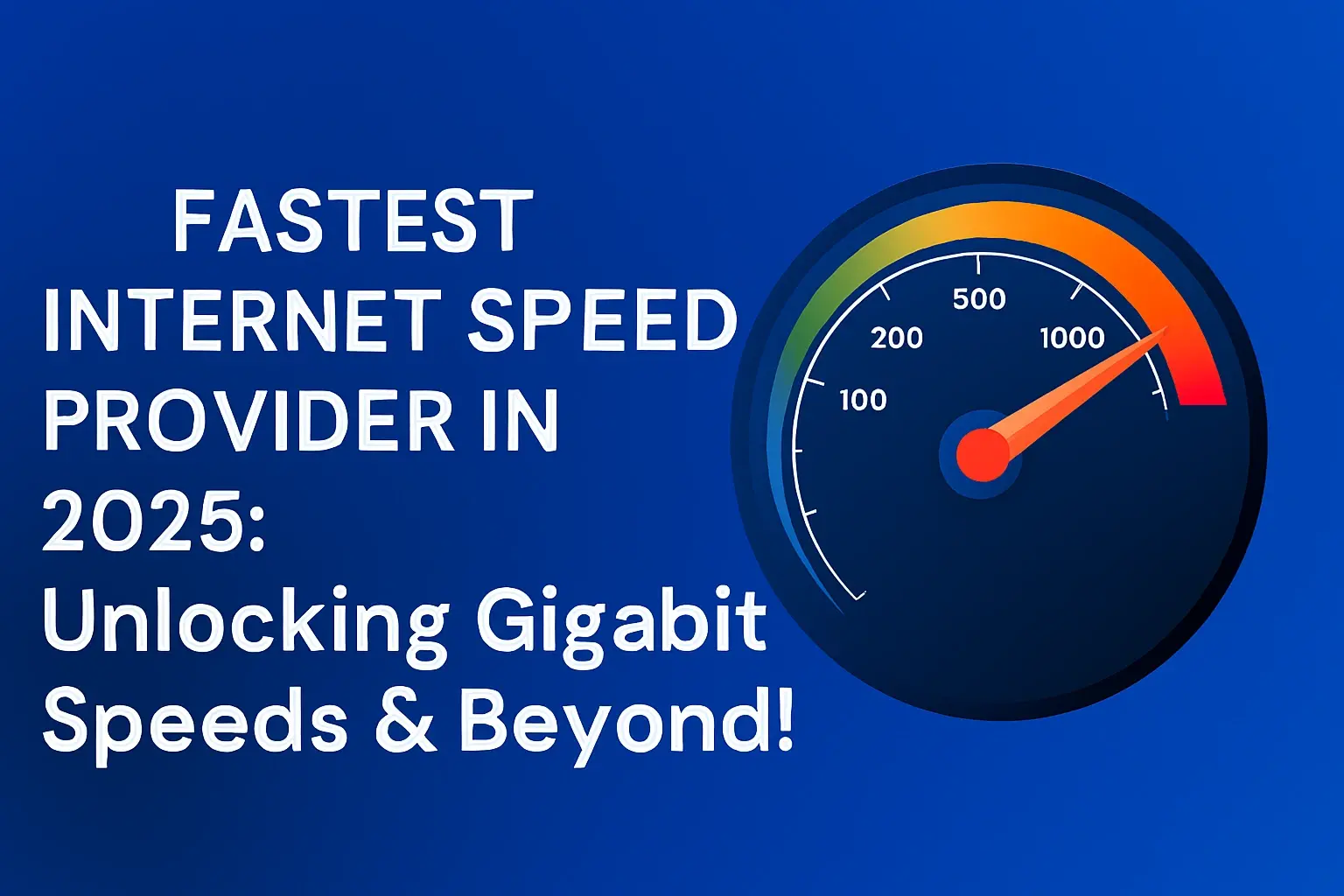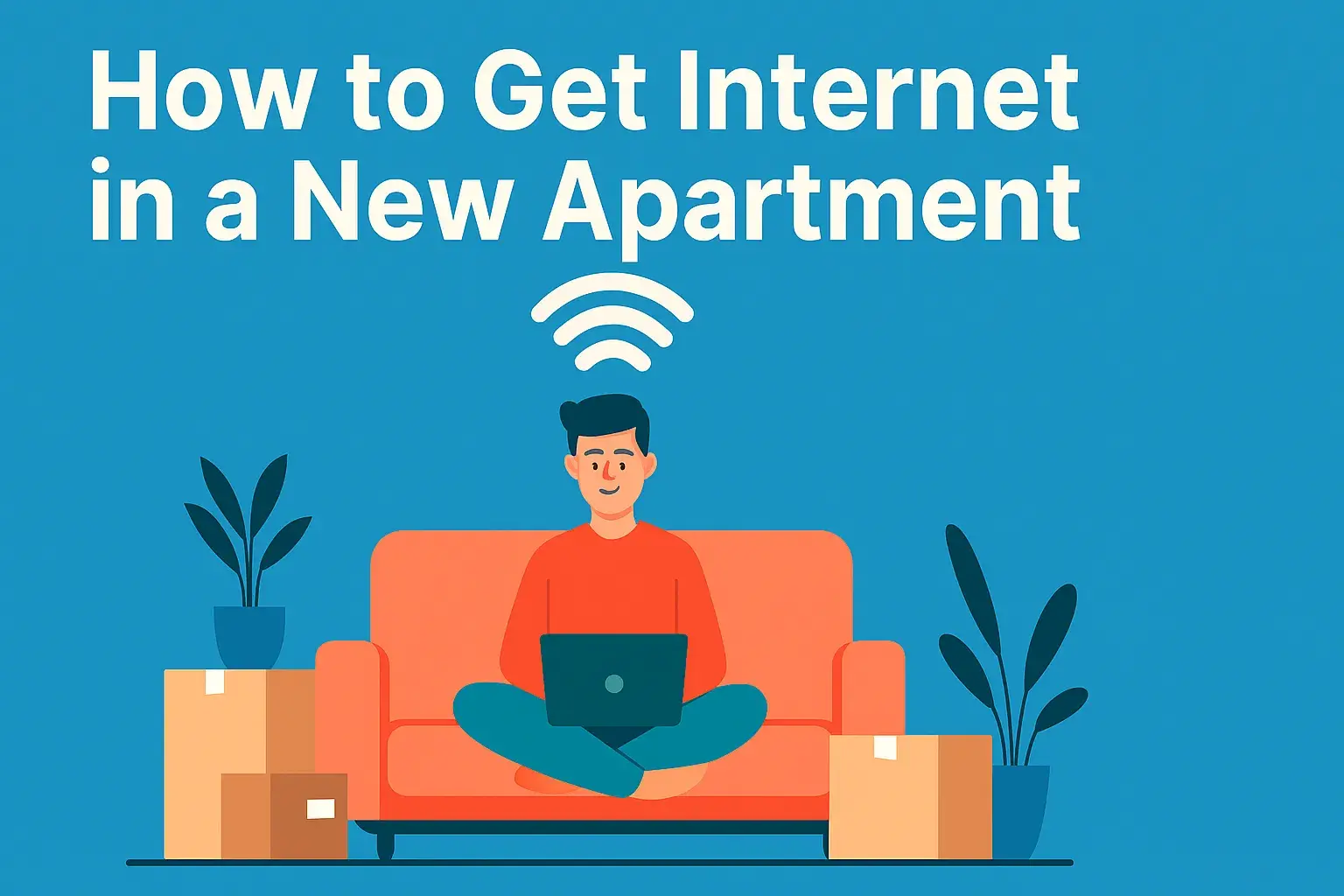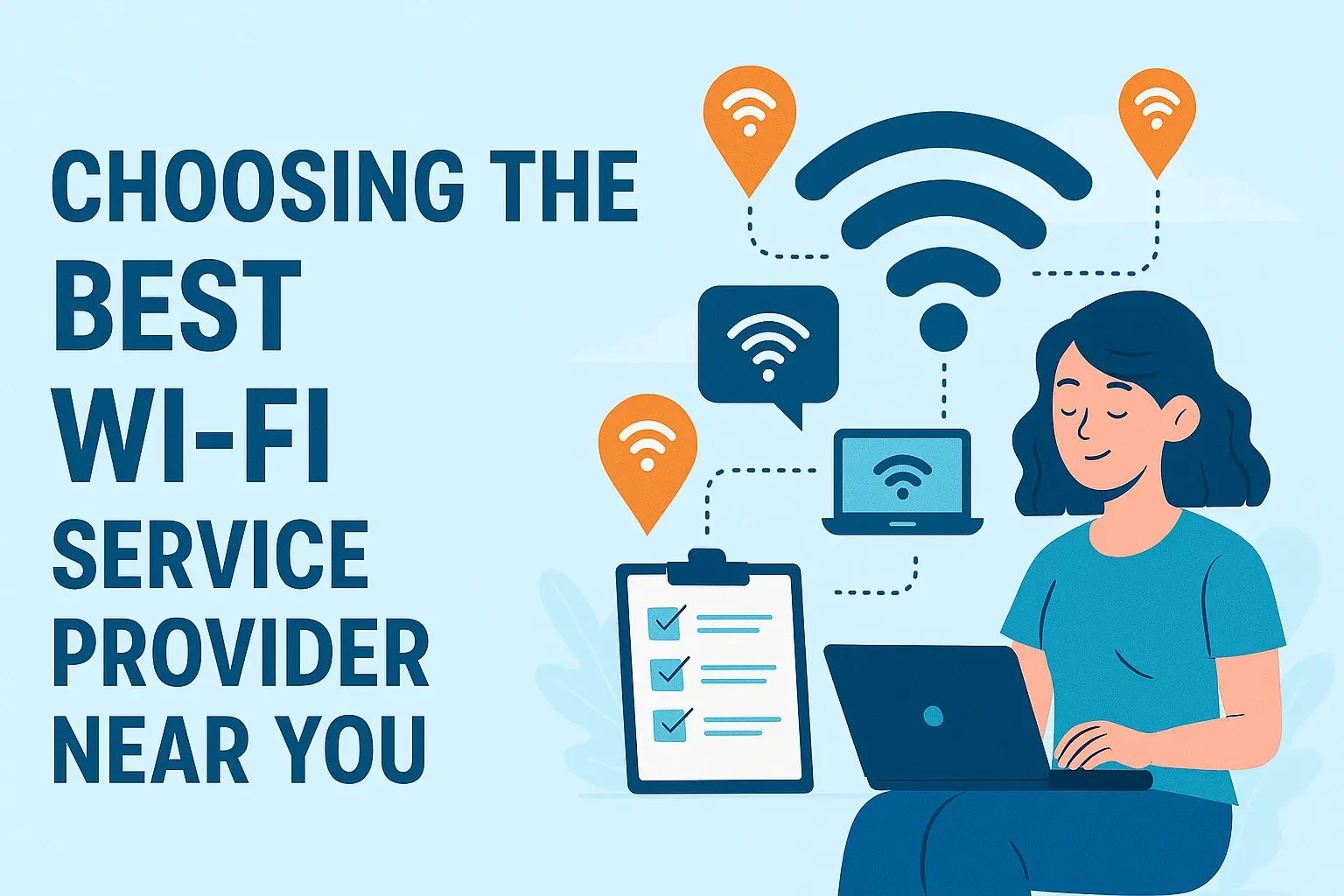Cheap Cable TV and Internet Providers Near You

Finding affordable cable TV and internet bundles can feel like a treasure hunt, but it doesn't have to be. This guide cuts through the confusion, helping you discover the cheapest providers and plans available in your specific area. Get ready to save money without sacrificing quality.
Understanding Your Needs: The First Step to Savings
Before diving into the sea of providers and plans, the most crucial step to finding cheap cable TV and internet is to accurately assess your household's actual usage. Many consumers overpay because they subscribe to services they rarely use or need. For cable TV, consider how many channels your family actually watches. Do you need hundreds of niche channels, or are you content with a basic selection of news, sports, and entertainment? Are premium channels like HBO, Showtime, or sports packages essential, or are they just nice-to-haves? Quantifying your TV viewing habits will prevent you from paying for channels that gather digital dust.
Similarly, for internet service, understanding your household's online activities is paramount. How many people in your home are using the internet simultaneously? What are your primary online activities? Are you a casual browser and occasional email checker, or do you frequently stream high-definition movies, play online games, download large files, or participate in video conferences for work or school? The average internet speed needed for basic browsing and email is significantly lower than what's required for heavy streaming or gaming. In 2025, the average household internet speed requirement for moderate usage is around 50-100 Mbps. However, for households with multiple users and heavy streaming or gaming, speeds of 200-500 Mbps or even higher might be necessary. Understanding these nuances will help you avoid paying for excessive speeds you won't utilize, a common pitfall for many.
Data caps are another critical factor for internet usage. Some providers impose limits on the amount of data you can download and upload each month. Exceeding these caps can result in extra charges or throttled speeds. If your household is a heavy internet user, especially for streaming or gaming, you'll need to ensure your plan offers unlimited data or a cap high enough to accommodate your usage. Many providers offer unlimited data plans, but these often come at a higher monthly cost. By clearly defining your needs, you can filter out unnecessary features and excessive speeds, paving the way for truly cheap cable TV and internet solutions.
Key Factors Influencing Provider Availability and Pricing
The landscape of cable TV and internet providers is highly localized. What's available and affordable in one neighborhood might be entirely different just a few miles away. Several key factors dictate which providers serve an area and the pricing structures they employ.
Infrastructure and Competition: The primary determinant of provider availability is the existing infrastructure. Companies invest heavily in laying fiber optic cables, coaxial cables, and other network technologies. Areas with established cable networks often have more competition, leading to better pricing and service options. Conversely, rural or less densely populated areas may have limited options, often dominated by a single provider, which can drive up prices due to a lack of competition. In 2025, the expansion of fiber optic networks is increasing competition in many urban and suburban areas, offering higher speeds and more symmetrical upload/download capabilities.
Regulatory Environment: Local and federal regulations can also impact provider availability and pricing. Some municipalities may have exclusive franchise agreements with certain cable companies, limiting competition. Others may encourage open access to infrastructure, allowing multiple providers to offer services over the same network. These regulations can significantly influence the cost and variety of services available to consumers.
Provider Business Models: Different providers have distinct business models. Some, like traditional cable giants, focus on bundled entertainment and internet packages. Others, such as satellite providers, offer TV services but often rely on DSL or fixed wireless for internet, which can be slower and less reliable. Newer entrants, like fiber-optic providers and mobile virtual network operators (MVNOs) offering home internet, are increasingly disrupting the market with competitive pricing and performance. Understanding these models helps in identifying the best fit for your needs and budget.
Demographics and Market Size: Providers often target areas with a higher potential for profitability. Densely populated urban and suburban areas with a larger customer base are more attractive for investment in advanced infrastructure. This can lead to more competitive pricing and a wider array of service options in these regions compared to rural or economically disadvantaged areas.
Promotional Offers and Contracts: A significant factor in perceived "cheapness" is the availability of promotional offers. Providers frequently offer introductory discounts, free equipment, or bundled deals to attract new customers. However, these offers are often time-limited, and prices can increase substantially after the promotional period ends. Understanding the duration of these promotions and the standard pricing afterward is crucial for long-term affordability. Contracts also play a role; while they might lock in a lower price, they also restrict your ability to switch if better deals emerge. In 2025, many providers are offering more flexible contract options, including month-to-month plans, to cater to consumer demand for flexibility.
Researching Local Providers: Your Roadmap to Cheap Deals
Finding cheap cable TV and internet providers near you requires a systematic approach to research. The goal is to identify all available options in your specific location and then compare them based on your needs and budget. Here’s a step-by-step guide:
1. Utilize Online Search Tools: Start with broad searches like "cable TV providers [your city/zip code]" and "internet providers [your city/zip code]." Many reputable websites aggregate provider information and allow you to enter your address to see what's available. These tools are invaluable for quickly identifying the major players and some smaller, local providers.
2. Check Provider Websites Directly: Once you have a list of potential providers, visit their official websites. Most have an address lookup tool that confirms service availability and displays current plans and pricing. Pay close attention to the details, as introductory offers might not be immediately obvious.
3. Look for Local and Regional Providers: Don't overlook smaller, regional cable companies or municipal broadband initiatives. These providers can sometimes offer more competitive pricing or better customer service than national giants, especially in areas with less competition. Search for terms like "local cable company [your town]" or "municipal internet [your county]." For example, in some areas, local utility companies might offer internet services.
4. Consult Neighboring Areas (with caution): If your immediate area has limited options, it might be worth checking if providers serve adjacent neighborhoods or towns. However, be aware that pricing and availability can change drastically even across a street, so always confirm service for your exact address.
5. Read Online Reviews and Forums: Websites like Yelp, Google Reviews, and dedicated tech forums can provide insights into customer experiences with different providers. Look for patterns in reviews regarding reliability, customer service, billing issues, and the accuracy of advertised speeds. Pay attention to recent reviews, as service quality can change over time. In 2025, many consumers are sharing their experiences on platforms like Reddit, offering candid feedback.
6. Inquire with Neighbors: A simple conversation with your neighbors can be a goldmine of information. Ask them which providers they use, what plans they have, how much they pay, and if they are satisfied. They might also be aware of current promotions or deals you haven't found online.
7. Consider Satellite and Fixed Wireless Options: If traditional cable and fiber are unavailable or too expensive, satellite internet (like HughesNet or Viasat) and fixed wireless providers might be your only options. While often more expensive and prone to weather-related disruptions, they can be a viable alternative in remote areas. Be mindful of their data caps and potentially slower speeds compared to wired options. In 2025, satellite internet is seeing improvements with new constellations, but wired options generally remain superior for speed and reliability.
By combining these research methods, you'll build a comprehensive understanding of the available cheap cable TV and internet providers in your vicinity, empowering you to make an informed decision.
Comparing Cable TV Packages: What to Look For
When searching for cheap cable TV, the sheer number of packages and features can be overwhelming. To make an informed decision, focus on these key aspects:
Channel Lineup: This is the most fundamental aspect. Categorize channels by genre:
- Basic/Limited: Typically includes local broadcast channels, public access, and a few basic news and entertainment channels. This is the cheapest option.
- Standard/Expanded: Adds more popular cable networks for news, sports, movies, and general entertainment.
- Premium: Includes premium movie channels (HBO, Cinemax, Showtime), sports channels (ESPN, NFL Network), and niche channels.
Pricing and Promotions: Always look beyond the advertised price.
- Introductory Offers: Many providers offer significant discounts for the first 6-12 months. Understand the price after this period.
- Contract Length: Longer contracts might offer lower monthly rates but reduce flexibility. Month-to-month plans offer flexibility but can be more expensive.
- Bundling Discounts: Sometimes, bundling TV with internet can lead to savings, but always compare the bundled price against individual services.
Equipment Rental Fees: Cable boxes and DVRs often come with monthly rental fees. These can add $10-$20 or more to your bill each month. If possible, check if you can use your own compatible equipment to save money. Some providers may offer a certain number of free basic boxes.
On-Demand and Streaming Apps: Many cable packages now include access to on-demand libraries or apps that allow you to stream content on other devices. Assess if these features add value for you or if you're paying for something you won't use. For example, if a package includes access to a streaming app for a premium channel you don't watch, it's an unnecessary cost.
Sports and Premium Channels: If you're a sports fan or enjoy premium movie channels, these will significantly increase the cost. Look for packages specifically tailored to your interests. Sometimes, it might be cheaper to subscribe to a streaming service for specific sports leagues or channels than to get them through a cable bundle.
Customer Service and Reliability: While not directly a feature of the package, the provider's reputation for customer service and network reliability is crucial. Poor service can lead to frustration and unexpected costs due to downtime. Researching reviews is vital here.
Example Scenario: A single individual who primarily watches local news and a few popular entertainment channels might find a basic package for $30-$50/month sufficient. A family that watches multiple sports channels, news networks, and enjoys movies might need an expanded or premium package, costing $80-$150+/month. Identifying your core viewing needs is the first step to finding a genuinely cheap TV package.
Evaluating Internet Plans: Speed, Data, and Beyond
Finding a cheap internet plan that meets your needs requires understanding the technical specifications and pricing models. Here’s a breakdown:
Internet Speed (Mbps): Speed is measured in megabits per second (Mbps). It's crucial to match speed to your usage.
- Basic Browsing & Email (10-25 Mbps): Suitable for one or two users doing light web surfing, checking email, and occasional social media.
- Moderate Use (50-100 Mbps): Good for households with multiple users, streaming HD video on 1-2 devices, online shopping, and standard video calls. This is often the sweet spot for affordability and performance for many families.
- Heavy Use (200-500 Mbps): Recommended for households with many users, multiple HD/4K streams simultaneously, online gaming, large file downloads/uploads, and frequent video conferencing.
- Power Users (1 Gbps+): For very demanding users, gamers, content creators, or large households with extremely high simultaneous usage.
Data Caps: As mentioned, data caps limit your monthly data usage.
- Unlimited Data: Ideal for heavy users, but often comes at a premium price.
- Tiered Data: Plans with specific data allowances (e.g., 1TB, 2TB). If you consistently stay within your cap, these can be cheaper than unlimited plans.
- No Data Caps: Some providers, particularly fiber and some cable providers, offer truly unlimited data.
Connection Type:
- Cable Internet: Widely available, offers good speeds (up to 1 Gbps or more), and is generally reliable. Speeds can fluctuate during peak hours due to shared bandwidth.
- Fiber Optic: The fastest and most reliable option, offering symmetrical upload/download speeds. Availability is growing but still limited in many areas. Often more expensive but offers superior performance.
- DSL: Uses telephone lines, generally slower than cable or fiber, and speed degrades with distance from the provider's hub. Often the cheapest option in areas with limited choices.
- Satellite Internet: Available everywhere but typically the slowest, most expensive, and prone to latency and weather issues. Usually has strict data caps.
- 5G Home Internet: A newer option from mobile carriers, offering competitive speeds and often unlimited data. Availability is expanding rapidly.
Pricing and Contracts:
- Promotional Pricing: Similar to TV, internet plans often have introductory discounts.
- Contract Requirements: Some plans require 12-24 month contracts for the best rates.
- Equipment Fees: Modem/router rental fees can add $10-$15 monthly. Buying your own compatible equipment can save money long-term.
Example Scenario: A student living alone who streams Netflix occasionally, browses the web, and does video calls might find a 50-100 Mbps cable plan with a 1TB data cap for $40-$60/month to be cheap and sufficient. A family of four with gamers and streamers would likely need a 300-500 Mbps plan with unlimited data, potentially costing $70-$100+/month, even with promotional pricing.
Bundling Cable TV and Internet: The Pros and Cons
Bundling your cable TV and internet services from a single provider is a common strategy for potentially saving money and simplifying your bills. However, it's not always the cheapest or best option. Here's a look at the pros and cons:
Benefits of Bundling:
- Potential Cost Savings: Providers often offer discounts when you purchase multiple services together. This is the primary allure of bundling. A bundle might cost less than subscribing to separate TV and internet services from different companies.
- Simplified Billing: Receiving a single bill for all your home services can make budgeting and payment easier. You only have one company to contact for service issues or billing inquiries.
- Promotional Offers: Bundles are frequently paired with attractive introductory deals, such as discounted rates for the first year, free equipment, or waived installation fees.
- Convenience: Setting up services from one provider can be more straightforward than coordinating with multiple companies.
Drawbacks of Bundling:
- Not Always the Cheapest: While bundles *can* save money, they aren't universally the cheapest option. If you have very basic needs for both TV and internet, it might be more cost-effective to find the cheapest standalone plan for each service from different providers. For example, a budget-conscious user might find a cheap standalone internet plan from a fiber provider and a separate, cheap live TV streaming service.
- Paying for Unused Services: Bundles often include packages with more channels or higher internet speeds than you actually need. You might be paying for premium channels you never watch or internet speeds far exceeding your usage, simply because it's part of the bundle.
- Reduced Flexibility: If you're unhappy with one aspect of your bundled service (e.g., poor TV channel selection), you might be locked into a contract that prevents you from switching that service to a better provider without also breaking your internet contract, potentially incurring early termination fees.
- Price Increases After Promotions: The most significant drawback is often the steep price increase after the introductory promotional period ends. What seemed like a cheap deal can become quite expensive.
- Customer Service Issues: If you have a problem that spans both services, it can sometimes be more complicated to resolve when handled by a single provider compared to dealing with specialized companies for each service.
- You genuinely use most of the services included in the bundle.
- The bundled price is demonstrably lower than the sum of the cheapest standalone plans for your needs.
- You are comfortable with the provider's standard pricing after the promotional period or are willing to renegotiate or switch providers at that time.
- You have very specific, low-demand needs for TV or internet (e.g., only local channels, basic internet).
- You find significantly cheaper standalone deals from different providers that, when combined, are still less expensive than the bundle.
- You prioritize flexibility and want the freedom to switch providers for one service without affecting the other.
Negotiating the Best Deals: Tips and Tricks for Savings
The advertised prices for cable TV and internet are rarely the final prices. Providers often have room for negotiation, especially if you're a new customer or threatening to leave. Here’s how to negotiate the best deals:
1. Do Your Homework: Before calling, know exactly what you want and what competitors are offering in your area. Have competitor pricing and package details ready. This gives you leverage.
2. Call the Retention Department: If you're an existing customer looking for a better deal, ask to be transferred to the "retention department." These representatives are empowered to offer discounts and special packages to keep you from leaving.
3. Be Polite but Firm: Start by explaining your situation calmly. State that you're looking for a more affordable plan or that you're considering switching to a competitor due to pricing. Highlight specific competitor offers if you have them.
4. Ask About Promotions and Discounts: Inquire about any current promotions, new customer deals (even if you're an existing customer, sometimes they can be applied), loyalty discounts, or bundled service savings. Don't be afraid to ask directly, "What's the best price you can offer me?"
5. Negotiate Fees: If the monthly rate is firm, try to negotiate other costs, such as equipment rental fees, installation fees, or activation fees. Ask if they can be waived or reduced.
6. Bundle Strategically: If you need both TV and internet, ask about bundle discounts. However, be clear about which services you *actually* need. Don't let them upsell you on a bundle with services you won't use just for a small discount.
7. Mention Competitor Offers: "Competitor X is offering a similar package for $Y per month. Can you match or beat that?" This is a powerful negotiation tactic. Ensure the competitor's offer is for comparable services.
8. Be Prepared to Walk Away (or threaten to): If you're not getting the deal you want, politely state that you'll have to explore other options. Sometimes, this is enough to prompt a better offer. If you're willing to switch, you have more leverage.
9. Get Everything in Writing: Once you agree on a price and package, ensure you receive confirmation of the terms, including the promotional period, the price after the promotion ends, and any included fees. This prevents misunderstandings later.
10. Re-evaluate Regularly: Don't set it and forget it. Mark your calendar for when promotional periods end. Call back and renegotiate or be prepared to switch providers to secure the best ongoing rates. In 2025, the market is dynamic, so continuous vigilance pays off.
Example Negotiation: You: "Hi, I'm looking to lower my monthly bill. My current internet and TV package is costing me $150, and I've seen that [Competitor Name] is offering a similar bundle for $110." Representative: "I understand. Let me see what I can do for you. We have a new promotion for existing customers..." (After some back and forth) Representative: "I can offer you a bundle with 300 Mbps internet and our Expanded Cable package for $100 per month for the first 12 months, with no equipment rental fees. After 12 months, the price will increase to $130." You: "That's better, but can you extend the $100 price for 18 months, or perhaps lower the post-promotion price to $120?" Representative: "I can't extend the $100 for 18 months, but I can offer it for 12 months and then guarantee the price at $125 for the following 12 months. I can also waive the installation fee." You: "Okay, that sounds acceptable. Please confirm the details."
Understanding Hidden Costs and Fees
The advertised monthly price for cable TV and internet is often just the beginning. Numerous hidden fees and surcharges can significantly inflate your actual bill. Being aware of these is crucial for truly finding cheap services.
1. Installation/Activation Fees: Many providers charge a one-time fee to set up your service or activate your account. These can range from $50 to $200 or more. Always ask if these fees can be waived, especially if you're a new customer or switching from another provider.
2. Equipment Rental Fees: This is one of the most common hidden costs.
- Cable Boxes: Each additional cable box beyond the first one often incurs a monthly rental fee ($5-$15 per box).
- Modems/Routers: If you rent your modem and/or router from the provider, expect to pay $10-$20 per month. Buying your own compatible equipment can save hundreds of dollars over the life of your service.
3. Broadcast TV Fees/Regional Sports Fees: Cable providers often pass on the costs of carrying local broadcast channels (like ABC, CBS, NBC, FOX) and regional sports networks to consumers through these monthly surcharges. These fees can add $5-$15 per month to your bill, even if you don't watch those channels.
4. Taxes and Surcharges: Beyond the listed fees, various federal, state, and local taxes and surcharges will be added to your bill. These vary by location and can add a significant percentage to your monthly cost.
5. Data Overage Charges: If your internet plan has a data cap and you exceed it, you'll be charged for the extra data used. These charges can be substantial, often $10-$20 per gigabyte over your limit.
6. Early Termination Fees (ETFs): If you're on a contract and cancel service before the contract term is up, you'll likely face hefty ETFs, often $10-$20 for each month remaining on the contract. This can be several hundred dollars.
7. Service Call Fees: If a technician needs to visit your home to resolve an issue and the problem is determined to be with your equipment (not the provider's network), you might be charged for the service call.
How to Avoid/Minimize Hidden Costs:
- Read the Fine Print: Always review the service agreement and the detailed breakdown of charges before signing up.
- Ask Explicit Questions: Don't hesitate to ask the sales representative about every potential fee: "Are there any other charges I should be aware of besides the monthly rate?" "What is the cost of equipment rental?" "What happens if I go over my data cap?"
- Purchase Your Own Equipment: For internet service, buy a compatible modem and router instead of renting. Check the provider's website for a list of approved devices.
- Opt for Month-to-Month Plans: If possible, choose plans without long-term contracts to avoid ETFs.
- Monitor Your Bills: Regularly check your monthly bills for any unexpected charges or increases.
- Negotiate: Try to negotiate away installation fees, activation fees, and equipment rental fees.
Alternatives to Traditional Cable TV and Internet
The market for home entertainment and connectivity is rapidly evolving. If traditional cable TV and internet providers are too expensive or don't meet your needs, several alternatives are worth considering in 2025:
1. Live TV Streaming Services: These services offer live channels streamed over the internet, often at a lower cost than traditional cable, with more flexibility.
- Sling TV: Offers customizable "Orange" and "Blue" packages, allowing users to pick and choose channels. It's often one of the cheapest options for live TV.
- Hulu + Live TV: Combines live TV channels with Hulu's on-demand library and Disney+. A comprehensive but pricier option.
- YouTube TV: Offers a wide range of channels, unlimited cloud DVR storage, and a user-friendly interface.
- FuboTV: Primarily focused on sports, offering a vast selection of sports channels, but also includes general entertainment.
- DirecTV Stream: Offers various packages, including options with regional sports networks, and can be bundled with internet.
2. On-Demand Streaming Services: For those who don't need live TV, services like Netflix, Amazon Prime Video, Max, Disney+, Apple TV+, and Peacock offer vast libraries of movies and TV shows for a monthly subscription fee. These are generally much cheaper than cable packages and offer more content flexibility.
3. Over-the-Air (OTA) Antennas: For local broadcast channels (ABC, CBS, NBC, FOX, PBS), a digital antenna is a one-time purchase that provides free, high-definition reception. The quality and number of channels depend on your location and the antenna's range. This can significantly reduce the need for a basic cable TV package.
4. Fixed Wireless Internet: In areas where cable or fiber is unavailable or expensive, fixed wireless providers offer internet service by transmitting a signal from a tower to a receiver on your home. Speeds and reliability can vary, but it's often more affordable than satellite. Check for local providers in your area.
5. 5G Home Internet: Major mobile carriers (Verizon, T-Mobile, AT&T) are expanding their 5G home internet services. These can offer speeds comparable to cable or fiber in some areas, often with unlimited data and competitive pricing, especially if you're already a customer of their mobile service. Availability is growing rapidly in 2025.
6. Municipal Broadband: Some cities and towns are investing in their own fiber optic networks, offering high-speed internet at competitive prices. Research if your municipality has such an initiative.
7. Satellite Internet (HughesNet, Viasat): While often the last resort due to cost, latency, and data caps, satellite internet is available virtually anywhere. Newer satellite technologies are improving, but wired options are generally superior for speed and reliability.
Combining Alternatives: The most cost-effective approach often involves combining these alternatives. For example:
- An OTA antenna for local channels + a live TV streaming service for cable channels + a cheap standalone internet plan.
- On-demand streaming services + a cheap standalone internet plan.
- 5G Home Internet + on-demand streaming services.
Making the Switch: A Step-by-Step Guide
Switching cable TV and internet providers can seem daunting, but with a clear plan, it's a straightforward process. Follow these steps to ensure a smooth transition:
Step 1: Research and Select Your New Provider(s)
- As detailed in previous sections, identify all available providers in your area.
- Compare plans based on your needs (channels, internet speed, data caps).
- Factor in all costs: monthly fees, equipment rental, installation, activation, and potential hidden fees.
- Check for current promotions and contract terms.
- Read recent customer reviews for reliability and customer service.
- Decide whether to bundle or choose separate providers for TV and internet.
Step 2: Understand Your Current Contract and Fees
- Review your current provider's contract for any early termination fees (ETFs).
- Note down your current monthly bill and the exact services you're paying for.
- If you're under contract, calculate the total cost of staying versus switching (including ETFs).
Step 3: Schedule Installation with the New Provider
- Once you've chosen a provider and plan, contact them to set up an installation appointment.
- Be aware that installation appointments can book up quickly, especially during peak times.
- Ensure someone over 18 is home for the entire duration of the appointment.
- Ask about self-installation options if available; this can sometimes save on fees and scheduling hassle.
Step 4: Prepare for Installation Day
- Clear the area where the technician will be working.
- Ensure easy access to power outlets and any existing cable or phone jacks.
- Have your Wi-Fi network name (SSID) and password ready if you're setting up your own router.
Step 5: Install New Equipment and Test Services
- The technician will install the necessary equipment (modem, router, cable boxes).
- Once installed, test all your services thoroughly:
- Internet: Connect multiple devices, run speed tests (e.g., Speedtest.net), and check Wi-Fi signal strength.
- TV: Tune into various channels, check picture quality, and test any DVR or on-demand features.
- Report any issues immediately to the technician or customer service.
Step 6: Cancel Your Old Service
- After confirming your new service is working correctly, contact your old provider to cancel.
- Be prepared to pay any outstanding ETFs.
- Ask about returning old equipment (modems, cable boxes) to avoid further charges. Follow their instructions for returning equipment (e.g., shipping labels, drop-off locations).
Step 7: Review Your First Bill from the New Provider
- Carefully examine your first bill to ensure it matches the agreed-upon pricing and includes all the correct services.
- Contact customer service immediately if you find any discrepancies.
Finding cheap cable TV and internet providers near you is an achievable goal with the right approach. By thoroughly understanding your household's needs, diligently researching local options, comparing packages critically, and being prepared to negotiate, you can secure affordable services. Remember to always look beyond advertised prices, account for hidden fees, and consider alternatives like streaming services and 5G home internet. Making informed decisions and regularly re-evaluating your subscriptions will ensure you consistently get the best value for your money in the dynamic telecommunications market of 2025 and beyond.





